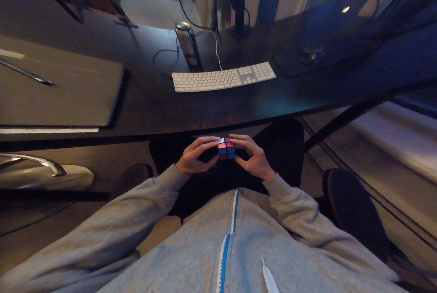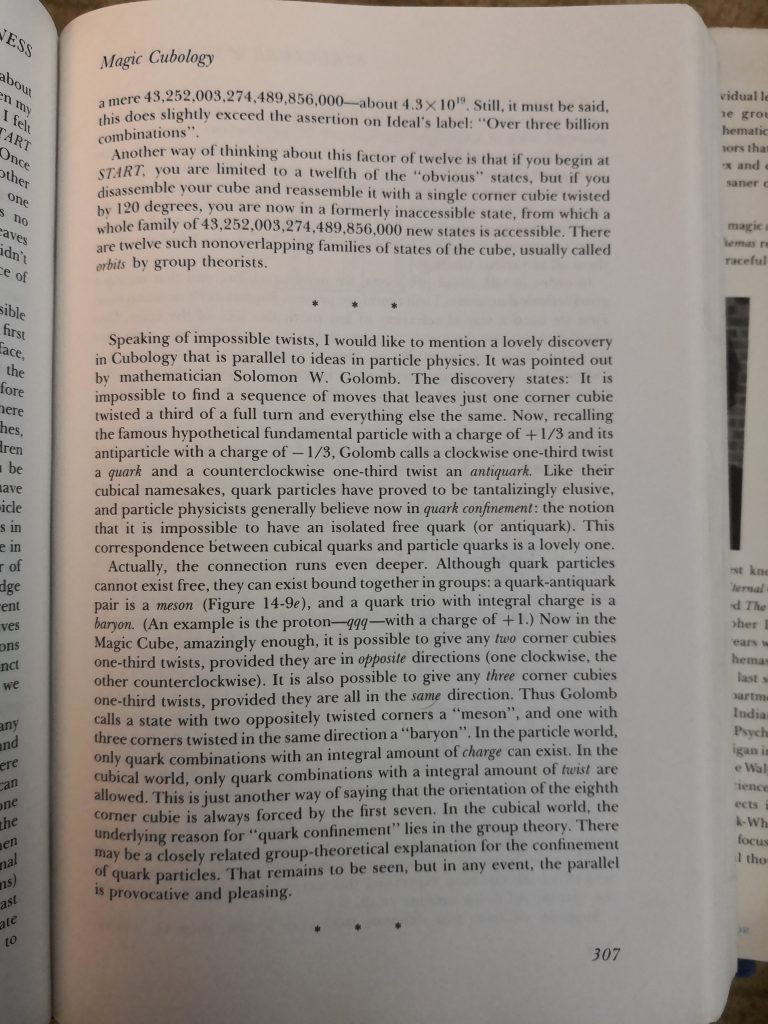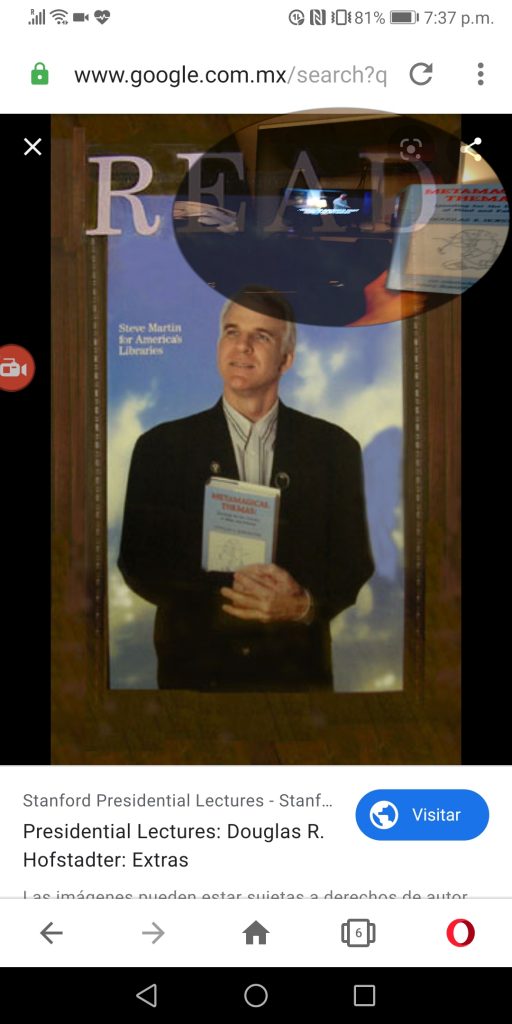One of the ways I’ve been procrastinating recently is by thinking half-heartedly about Rubik’s cubes. I’ve never solved one, and don’t want to learn the algorithms, so I slog through some trial and error with it every now and then. To inspire a recent attempt, a few months ago I opened up the chapters on “Cubology” in “Metamagical Themas“, skimmed through some of it, then put on the Go Pro, and gave a newly acquired 2x2x2 cube the old college try. In what seemed like the blink of an eye the Go Pro was out of battery and I was sitting on near 18GB of boring footage from several attempts.

This scared me enough to not try again for a few months, but my mind has returned to the topic twice since then, and it recently led to a possible coincidence.
The first time my mind returned to the Rubik’s cube is an aside from this story, but I think worth mentioning and should be of interest to the general reader. I was trying to think of a more dynamical way to connect a set of neural fields such that each field doesn’t have to be fully connected to each of the other fields in order for them to be jointly capable of representing their entire space of combinatorial possibilities. The “dynamic neural field theory” (DNFT) approach to cognitive representation can already incorporate something like this in two ways. Multidimensional representations are typically decomposed into a set of fields that maintain bidirectional projections with each other through a common field. This is very useful because neural fields with more than 2 dimensions are challenging to simulate ((Possibly the only “integral” 3-dimensional construct that we have is “colour”, according to \textcite{Shepard2001}: “We may need three dimensions of color not because the surfaces of objects vary in just three dimensions but because we must compensate for the three degrees of freedom of natural lighting in order to see a given surface as having the same intrinsic color regardless of that illumination”. It’s a very complex issue, but I often return to the 4-layer colour encoder-decoder network reported in \textcite{Lehky1999} when I’m trying to think about modeling representations of colour: “A particular ratio of activities in the population of wavelength tuning curves is assigned the label “white,” and the distribution of wavelengths that caused it does not matter. The set of all labels forms a qualia space. In this way the system avoids dealing with a difficult inverse problem and instead does something simple but perhaps behaviorally useful. Information is lost in this process, but the information that remains appears useful enough that there are evolutionary advantages to developing such systems.”)). In this talk by Sebastian Schneegans we can see some methods to bind representations across 3 feature dimensions, like, for example, with 3 separate 1-dimensional fields, and a single 2-dimensional field, similar to what’s happening here:
In combination with a kind of “use-it-or-lose-it” strengthening and weakening of the connections between these fields—“competitive learning”, “sparse coding”—the computational burden is lessened dramatically. But this is not quite what I had in mind when I was thinking about Rubik’s cubes. Rather, I wanted some way to go from a representational space with a fixed frame of reference for each field, like small-medium-large, to a relative frame of reference like small_fruit-medium_fruit-large_fruit, via a sequence of discrete operations on just the actual set of fields themselves. Naturally, this made me think of the Rubik’s cube again, with the faces being a set of 6, 2-dimensional fields. I think it could be useful to think of each “facelet” location on a face of the cube as having a receptive field centered on a “preferred” distance for the transforms that move that facelet to a location on another face. The decision to rotate the cube in a particular way, would originate from integrating activity for each location, given that location’s rotation distance “preferences”/receptive-field. It’s weird to think of Rubik’s cubes solutions as requiring decision procedures based on this. Now before you say “it’s not weird that the Rubik’s cube solver would need a decision procedure using information like that, and it’s irrelevant to what a Rubik’s cube metaphysically is”, let me discuss the next time I thought of the cubes.
The second time I thought of the cubes since my failed attempt at solving the 2x2x2, was this evening, as I tried to wrestle my mind into focusing on something properly erudite. I opened Metamagical Themas once again and began reading “Magic Cubology” in earnest. In particular I was looking for the page containing that most interesting of anecdotes about Rubik’s Cubes that I had never forgotten: Rubik’s cubes are thought to be a model of quarks. I wanted to photograph this page for a new collection of curiosities that I’m putting together, possibly as a daily picture site.

It was just at this point, that my girlfriend came in the room and asked if I wanted to finish watching “Planes, Trains, and Automobiles” with Steve Martin and John Candy. This is where the coincidence happens. A few minutes into the movie, my mind conjured up an old picture of Steve Martin holding “Metamagical Themas”:

What are the chances? We had been watching the movie a bit last night, so Steve Martin likely activated the idea I have of him as being an erudite celebrity, and I think he does look a bit like Douglas Hofstadter, but…Metamagical Themas was also laying next to my bed from where we watched the movie so that might have suggested the movie in conjunction with Thanksgiving time. Alternatively, I had been humming and hawing over whether to make a “daily curiosity” site or just a montage of curiosities as part of an art piece in an upcoming gallery I’d like to release in time for Christmas. This humming and hawing may have provoked me into opening the book this evening, and the memory of Steve Martin’s picture may be a genuine coincidence.










